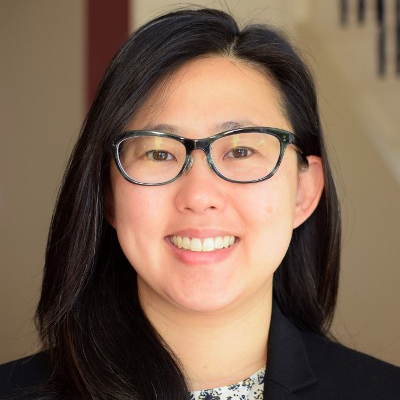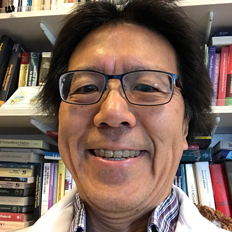| Program Directors | ||
 |
Adam J Engler, Ph.D. Material Cues Guide Metastatic Behavior Common biological markers of metastasis have been difficult to identify, but all metastatic cells must detach from their tumor and migrate through the adjacent tissue to reach a blood vessel. We find that cells with weak adhesion to their surrounding tissue are the most aggressive and form tumors at higher rates. The REU Participant will use a new cell separation technology with varied adhesive biomaterial substrates to assess which materials best separate metastatic cells based on adhesive differences and the Participant will then measure their invasive capacity in vitro. This work compliments boarder efforts to develop diagnostic assays that use adhesion to understand how tumor cells migrate. |
|
 |
Roberto Gaetani, Ph.D. | |
| Program Faculty | ||
 |
Pedro Cabrales, PhD Nanoparticle-based nitric oxide (NO) delivery platforms Topically-applied NO releasing nanoparticles are highly effective as a drug delivery vehicle. Targeted delivery of NO to a specific site such as tumors many be beneficial. To this end, the REU Participant with assist in developing a paramagnetic nanoparticle platform that is capable of targeted delivery of anti-cancer drugs that produce NO. This system will allow for localization at the site of an externally applied magnetic field. The Participant will work closely an extensive network of graduate student mentors to develop this system, modulate and measure optimal delivery via topical application, and study its effects both in vitro and in vivo. |
|
 |
Karen Christman, PhD Nano-aggregation strategies for the Heart There is a significant need to better deliver drugs to the heart after myocardial infarction. Nanoparticle delivery strategies are particularly attractive since they can be delivered via leaky vasculature created by the myocardial infarct. We have developed nanoparticles that aggregate after matrix metalloproteinase cleavage of an external protective layer. These aggregates remain at the infarction site for at least one month, and so we hypothesize that nanoparticle aggregates will significantly improve the yield and sustained release of drugs that minimize post-MI remodeling. The first REU Participant will learn the polymer synthesis, nanoparticle fabrication, and drug loading. He/she will perform in vitro assays to assess drug release and activity for FDA-approved drugs. Subsequent Participants will additionally alter how drugs are loaded (surface erosion versus diffusion) to change delivery kinetics to establish dosing amount, duration, and rate. |
|
 |
Stephanie I. Fraley, PhD Collagen Biomaterials as Tools for Tissue Engineering A major challenge to using fibrillar collagen as an engineered scaffold is the limited reproducibility of gelation, which impacts cellular functions. Gelation temperature and pH impact porosity, fiber diameter and alignment, and mechanical properties, thus we propose developing a microfluidic 3D collagen hydrogel curing system to generate defined extracellular matrix (ECM) fiber architectures in high throughput with precise thermal and pH modulation of the gelation process. The REU Participant will work with a graduate student Research Mentor to design the microfluidic curing system. The Participant will use COMSOL software to model the system and optimize the design prior to prototyping. The resulting tightly-controlled gelation system will enable highly mechanistic studies of cell-ECM interactions using a native protein hydrogel and create a platform for high-throughput optimization of ECM architecture to better define the cues needed to improve tissue engineering. In the process, the Participant will also learn cutting edge microscopy methods, including reflection confocal imaging and electron microscopy. |
|
 |
Jesse Jokerst, PhD Nanoparticles as contrast agents for molecular imaging Research in the Jokerst focuses on developing biomaterials as contrast agents for molecular imaging with an emphasis on acoustic protocols. For pulse-echo ultrasound experiments, the biomaterials are often composes of rigid materials like silica nanoparticles that have a high acoustic impedance mismatch versus adjacent soft tissue. Photoacoustic imaging contrast agents are governed primarily by their ability to absorb light. Hence a variety of aromatic and nanoparticle forms have been developed in Dr. Jokerst’s group with application in therapeutic drug monitoring, defense threat neutralization, and stem cell imaging. Students participating in this REU will gain expertise in biomaterial contrast agent synthesis and characterization—particularly biomaterials controlled to the nanometer scale regime. |
|
 |
Kevin King, MD, PhD Materials-based, High Throughput Inflammation Assay Understanding the cues that influence the how the immune system becomes activated, even when no infection is present, such as heart attacks or cancer, is complicated. To study how individual cytokines modify macrophage function, the REU Participant will work with a graduate student Research Mentor to optimize a scalable experimental platform [16] that uses polydimethylsiloxame with microfluidic channels built in to it to move co-cultured cells (diseased heart cells and immune cells) immobilized in small water-in-oil droplets around a device. Regions of the device will image different fluorescent protein reporters of immune cell activation in real-time to assess how the heart cells influence the immune cells. The Participant will develop fabrication, fluidics, and imaging skills necessary to study this cell-cell interaction |
|
 |
Ester Kwon, PhD Nanoscale delivery for traumatic brain injury Drug delivery to the brain remains a challenge, in particular the delivery of biomolecules such as proteins and nucleic acids. Design of nanoscale materials may offer a strategy to improve access of therapeutics to injured brain tissue. The goal of this REU is to engineer a nanomaterial that can interact with injured brain tissue and deliver therapeutics. In this project, the participant will synthesize nanomaterials, characterize nanomaterials, and evaluate interaction of nanomaterials with living cells. The REU will work directly with Dr. Kwon and a mentor to develop an individual training plan, learn experimental techniques, and communicate research findings. |
|
 |
Prashant Mali, PhD Systematic study and engineering of pancreatic organogenesis We will utilize and develop a vascularized bioprinting platform in the laboratory to build and mature pancreatic tissues ex vivo. Incorporating constituent cells generated via pluripotent stem cell differentiation, and via systematic evaluation of biomaterials, media, and local cellular microenvironment modulations we will aim to build functional and mature pancreatic tissue constructs. We will utilize omic, histology, and in vivo transplantation studies in SPZ-induced diabetic mice to assess for structure, function, and maturity of thus engineered organotypic tissues. In the process, researchers are anticipated to learn skills in tissue engineering, synthetic biology, cell culture, and animal handling procedures. |
|
 |
Robert L. Sah, MD, ScD Osteochondral Implants for Resurfacing Osteoarthritic Joints Osteochondral grafts are effective for repairing large areas of damaged cartilage but are limited by donor availability. Organ-scale bioreactors have the potential to rapidly generate osteochondral implants, increasing implant supply and addressing advanced disease including osteoarthritis. The REU participant will work with Prof. Sah and advanced researchers to create and test such bioreactors, and assess suitability of the osteochondral implant for in vivo application, based on experimental analyses of biomechanical and biological properties. The participant will learn to conduct studies using advanced methods in bioreactors and biomechanics. |
|
 |
Michael Sailor, PhD Porous Silicon Nanoparticles for In Vivo Imaging and Delivery of Biologic Therapeutics Porous silicon nanoparticles (PSiNPs) are a new class of quantum dots that are non-toxic, biodegradable, and that can be readily imaged in vivo. Due to their highly porous nature, the materials can secure and effectively deliver a range of protein- and nucleic acid-based therapeutics. REU Participants will explore the fundamental properties of these nanomaterials, focused on the following topical areas: in vivo imaging, next-generation nanofiber scaffolds for spinal cord and other neuronal injuries, nanotherapies for treatment of resistant bacterial infections, and gene delivery. As part of their training, the REU student will participate in the UCSD Summer School for Silicon Nanotechnology (http://sailorgroup.ucsd.edu/courses/SummerSchool/). |
|
 |
Nicole Steinmetz, PhD Plant Biomaterials as Drug Delivery Vehicles Tobacco mosaic virus (TMV) is a unique planted-based delivery system where, through heat and flow, the virus can be converted into nanoparticles [20]. This method produces an unceasing amount of particles that can be preloaded with anti-cancer drugs such as doxorubicin. REU Participants will create and load particles to assess how material processing parameters, e.g. temperature, buffers, flow rate, etc., affect particle formation, drug loading, and drug release to cancer cells. Subsequent participants will explore in vivo delivery and efficacy in triple negative breast cancer, which should provide skills in material synthesis, fabrication, and cell culture. |
|